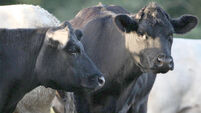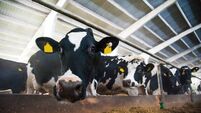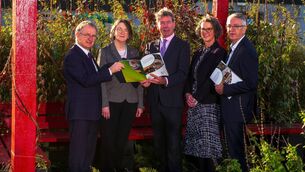Swedish report urges EU to halve its meat consumption to meet eco goals

Swedish scholars David Bryngelsson and Stefan Wirsenius have published a report which suggests EU citizens should be pushed to eat poultry and pork, whose husbandry produces significantly less greenhouse gas emissions.
The report’s authors suggest people will not have to cut out meat altogether, but will have to be more selective in their diet.
They state that producing 1kg of protein from dairy results in emissions four times greater than for an equivalent amount of poultry.
The report, ‘How Can The EU Climate Targets Be Met? A Combined Analysis of Technological and Demand-Side Changes In Food and Agriculture’, was published in the February issue of Food Policy journal.
“Cuts, by 50% or more, in ruminant meat (beef and mutton) consumption are, most likely, unavoidable if the EU targets are to be met,” the report states.
“Emissions from manure storage can all but be eliminated if the facilities are covered and waste gases are flared (burned off). But reducing the amount of food thrown away only cuts emissions from food and agriculture by 5%-10%.”
The Swedish study takes into account commitments made by the EU at the COP21 sustainable innovation forum in Paris in December.
The EU is seeking a 20% cut in greenhouse gas emissions (versus 1990 levels); to generate 20% of all EU energy from renewables; and to achieve 20% more energy efficiency.
The researchers at Chalmers University of Technology and Sweden’s Technical Research Institute focused their report on GHG emissions from agriculture.
They stated that farming contributes to 10% of the total EU’s greenhouse gas emissions.
This is largely down to two greenhouse gases: Methane from livestock digestion and stored animal manure; and nitrous oxide from organic and mineral nitrogen fertilisers.
The report says emissions from the production of fertilisers can be halved if factories used the latest technologies. As a first step, they advise farmers to cover over all manure containers.
The production of livestock and fodder globally generates more than three billion tonnes each of carbon dioxide equivalent.
In 2014, according to Eurostat data, Germany, Spain, France and the United Kingdom had the highest number of livestock.
The largest number of pigs was recorded in Germany and Spain (28.3 and 26.6 million animals respectively); cows in France (19.3 million head) and sheep (23.0 million head) in the UK.
The Irish Cattle and Sheep Association has suggested that enhanced supports for forestry and energy crops such as miscanthus would encourage farmers to move some of their focus out of livestock.
The ICSA suggests these improved grants could lead to a 5% reduction in the share of land use devoted to livestock in Ireland.










